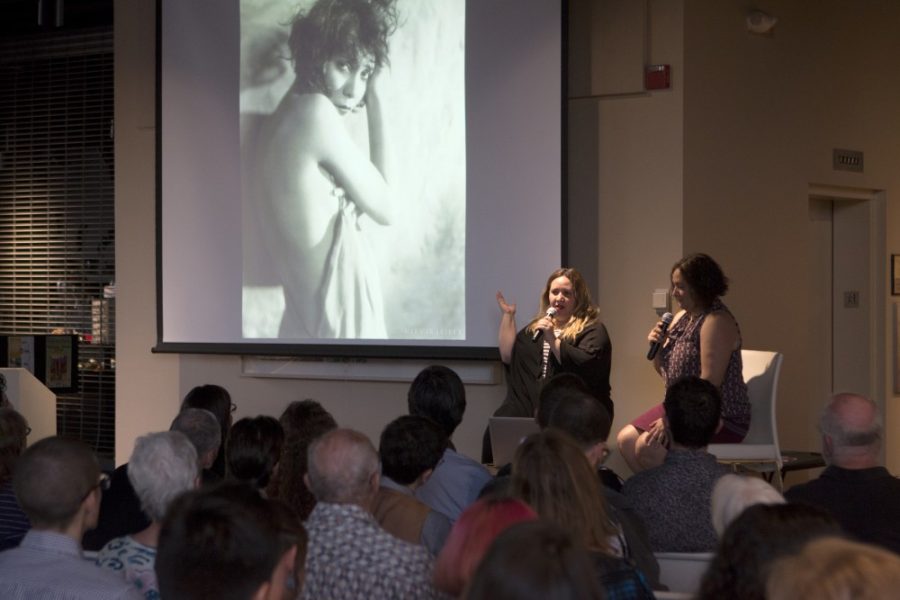The Tucson Cine Mexico 2017 festival kicked off with an Artist/Filmmaker Talk with “Bellas de Noche/Beauties of the Night” filmmaker Maria José Cuevas and University of Texas at Austin associate professor Laura Gutiérrez on March 22.
During the talk at the Tucson Museum of Art, the two women spoke how “vedettes,” Spanish for stars on stage or television, changed the way we used to see women. Cuevas said vedettes were the nightlife of Mexico.
Cuevas began attending the family-friendly versions of shows featuring vedettes with her father when she was 10 years old.
From the ‘30s to the ‘80s, the public could see that as time passed, the vedettes became more provocative, or “more risqué,” according to Gutierrez. However, after the ‘80s, there were no such thing as vedettes. Cuevas explained that around 1985, an earthquake devastated Mexico, destroying many buildings, even the cabarets.
Cuevas has spent the last 10 years collecting research on the women portrayed in the documentary. She has a collection of countless iconic images, including a more recent image of five women embracing the limelight in their 70s.
Gutiérrez, a former professor at UA and currently an associate professor in Latin American Performance Studies at the Univerisity of Texas at Austin, was eager to speak alongside Cuevas about their individual research.
RELATED: Festival highlights modern Mexican cinema
Gutierrez had been a part of the festival committee while living here in Arizona. She said the significance of the conversation for Cuevas’s documentary was the extensive archival research that had been done.
Gutiérrez also said the significance of the event was to highlight thatsome figures researched had been looked down upon or easily dismissed because of the way they functioned within Mexican culture.
“Basically, they were the sources of entertainment for male pleasure specifically,” Gutiérrez said.
She’s also interested in story logging with Cuevas to try and create a kind of lineage in these figures and their Mexican cultural landscape, specifically, because Cuevas has done research on women from the ‘70s and ‘80s, where Gutierrez mostly works from the ‘40s to ‘60s.
Gutiérrez hopes people understand the importance of the type of archival research that looks at figures who are not necessarily prominent or elite in the cultural field, but are in the second or third tier of hierarchies to come away with a more democratic understanding. She also hopes the audience looks at the women from the documentary now as they have had to overcome obstacles and reinvent themselves in a different historical moment.
“I think there is something really inspiring about the way these women continue to hold themselves up,” Gutiérrez said.
When asked about the significance of the festival she said, “I think Tucson Cine Mexico provides a great opportunity to explore the diversity of Mexican culture, and to find out what is happening in contemporary filmmaking in Mexico, and there is a lot happening.”
RELATED: Tucson’s Jewish community celebrates cultural diversity with international film festival
With the help of many local communities, the program continues to be a success. This year’s festival had support from the Department of Gender and Women’s Studies, the Institute for LGBT Studies, the Southwest Center and other sponsors, according to Kerryn Negus, assistant director of the Hanson Film Institute.
The festival premiere of “Bellas de Noche/Beauties of the Nigh,” is Friday, March 24, at 6:30 p.m. Tickets to the festival are free. To learn more about the festival or to get your tickets visit http://www.tucsoncinemexico.org/.









